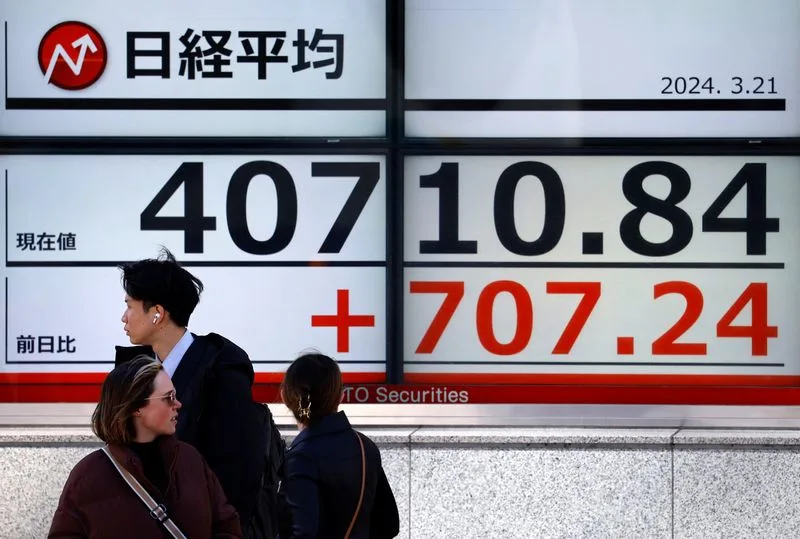Asian stocks are poised to end a two-week losing streak as major central banks initiate their rate easing cycles. This comes after the European Central Bank (ECB) and the Bank of Canada both announced rate cuts, following in the footsteps of Sweden’s Riksbank and the Swiss National Bank. These moves have injected fresh momentum into the global risk rally and increased expectations that the U.S. Federal Reserve may also lower rates in September. Market analyst Tony Sycamore commented that with two G7 countries cutting rates, it paves the way for the Fed to do the same.
The MSCI Asia-Pacific index, excluding Japan, followed the global stock market trend and rose 0.3% in early trading. The index is on track for a weekly gain of nearly 3%.
Hong Kong’s Hang Seng Index also saw a slight increase of 0.14%, while Chinese blue-chip stocks rose 0.23%.
On the other hand, Japan’s Nikkei fell 0.16%.
Market movements were relatively calm as traders awaited the release of the U.S. nonfarm payrolls report on Friday. Analysts expect the report to show that the U.S. economy added 185,000 jobs last month.
“If we see weaker data tonight, we could see 10-year Treasury yields drop towards the 4% level,” said Rob Carnell, ING’s regional head of research for Asia-Pacific. “In that case, equities would likely rally strongly, and this would have a positive impact across the region. We might also see the dollar weaken slightly as a result.”
The 10-year U.S. Treasury yield remained steady at 4.2987%, while the two-year yield increased by approximately two basis points to 4.7386%. This rise comes after six consecutive sessions of declines.
The decrease in yields is a result of growing expectations of rate cuts by the Federal Reserve. Recent data indicating a softening labor market in the United States has fueled these expectations.
Currently, the market is pricing in a roughly 50 basis point reduction in interest rates by the Federal Reserve this year.
Meanwhile, the dollar struggled against a basket of currencies, hovering near an eight-week low. It is on track to end the week with a loss of around 0.5%.
The euro saw a slight increase of 0.05% to $1.0895, building on its modest gain from the previous session. The European Central Bank’s higher inflation forecasts and lack of clarity on future rate cuts have kept investors uncertain about the timing of potential reductions.
Andrew Kenningham, chief Europe economist at Capital Economics, noted that the European Central Bank (ECB) has increased its projections for core and headline inflation. This suggests that policymakers may be less inclined to further lower interest rates. Additionally, there were slightly hawkish changes to the policy statement.
The yen weakened by 0.1% against the dollar, reaching 155.79. However, it is on track for a weekly gain of almost 1%.
Data released on Friday showed that Japanese household spending increased in April compared to the same period last year, marking the first growth in 14 months. However, the modest growth indicates that consumers are still cautious about spending due to rising prices.
In the commodities market, oil prices experienced a slight decline. Brent crude futures dropped by 0.09% to $79.80 per barrel, while U.S. West Texas Intermediate crude futures dipped by 0.1% to $75.48 per barrel.
Spot gold also saw a decrease of 0.2% to $2,370.82 per ounce.
(Note: This article was edited by Jacqueline Wong)
